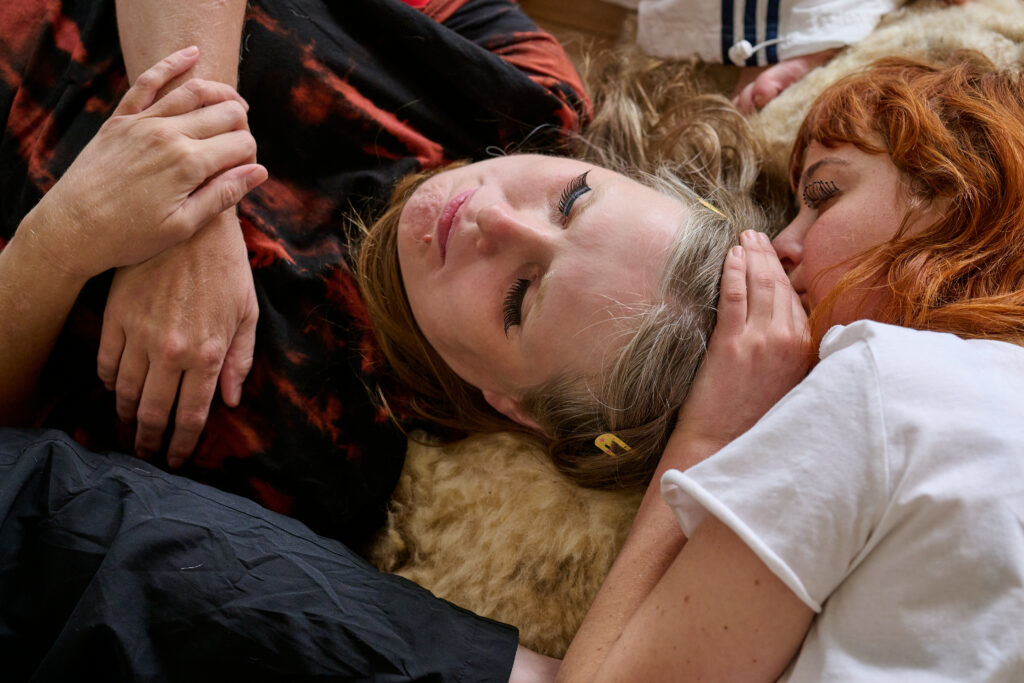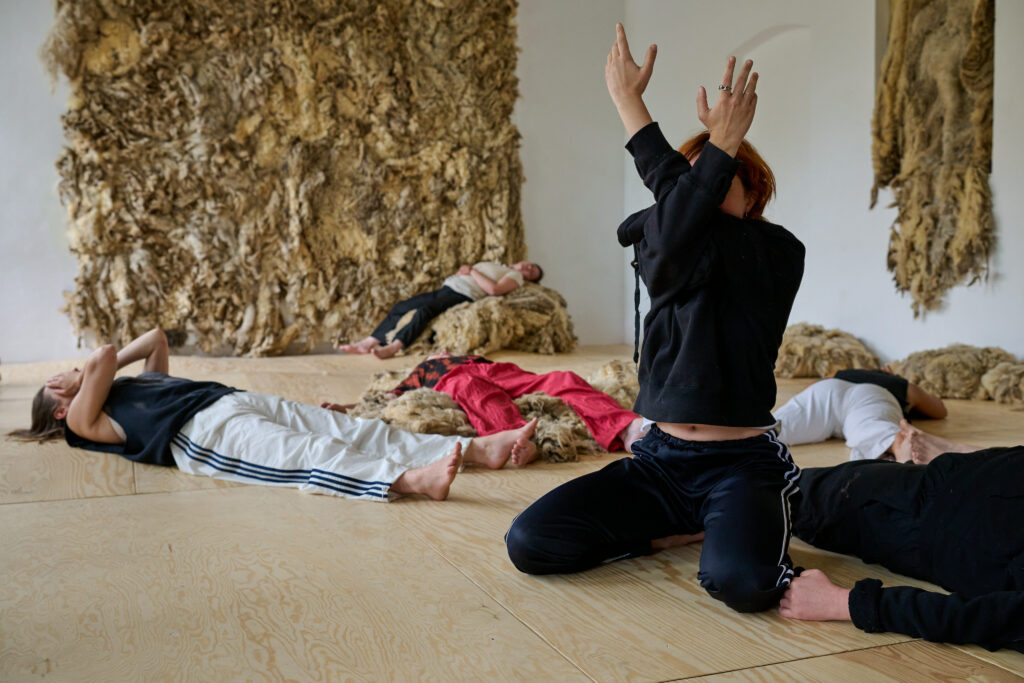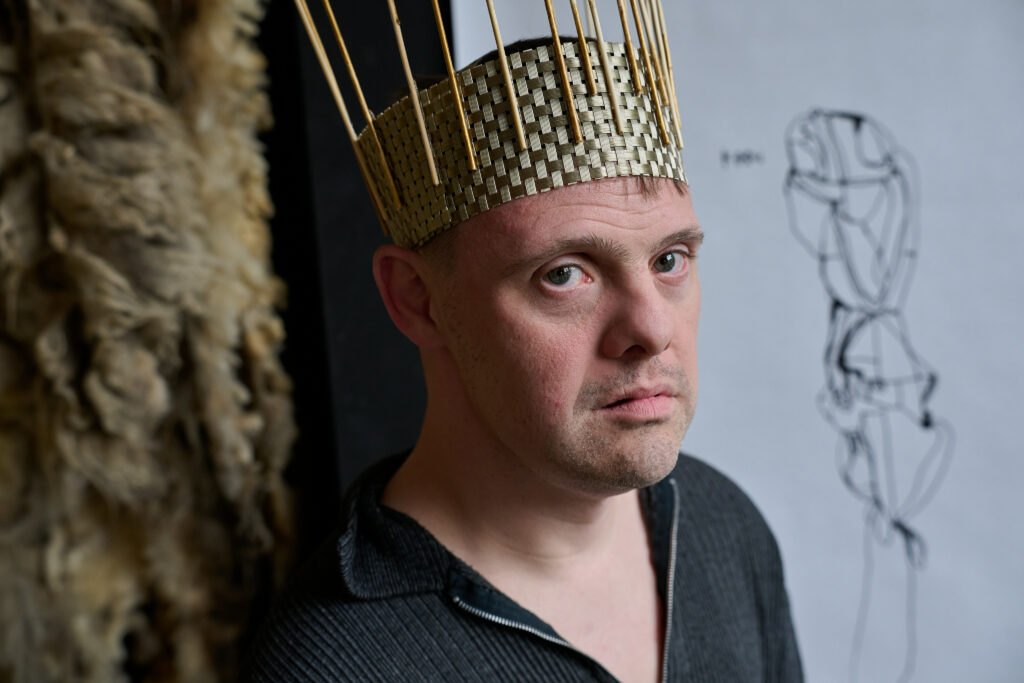YA!
At the center of this immersive and interactive dance choir is the plant yarrow. Nine humans are weaving fragments of melodies received by yarrow into time-fogging moving sound fields.
Trying to step into the ever fleeting moments of yarrow´s sphere, they wonder how they can show up without destroying its elusive nature with their human bones and flesh.
YARROW - what stores, what charges
what is carried away with the wind and disappears
YARROW - the constant in the disappearance
the mirror of oneness is the multitude
– Due to the scenic setting, there are only very limited traditional seating options. The audience is invited to sit on the wooden floor and seating made of sheep's wool and to move around the room. For those who cannot sit on the floor or do not wish to come into contact with untreated sheep's wool, alternative seating options will be provided.
– At the entrance, you are asked to remove your shoes.
– There is untreated sheep's wool in the room. It has a distinctive smell and contains wool wax (lanolin), which may stain clothing and, in rare cases, cause contact allergies. Contact with the wool is at your own risk.
- Unfortunately, late admission is not possible.
Saturday, June 29, 5:00-6:30 PM:
Tuning with the plant Yarrow: becoming porous and being protected
This time is dedicated to being infused with the plant yarrow/schafgarbe/achillea millefolium (among its many names.) Beginning from the familiar act of drinking a tea and guided through somatic attunement, listening, and language we will explore some of the themes, dynamics, and qualities that characterise this plant. We will address medicinal layers in the physical, emotional, social, political, mythical, and environmental bodies that this plant is part of.
Workshop with Shelley Etkin, in English spoken language.
Shelley Etkin is a transdisciplinary artist, educator, and gardener based in Berlin, Germany with roots in the US/Turtle Island and Israel/Palestine. She works at the intersections of art and ecology, engaging with relations between bodies and lands through place-based knowledges. Her work integrates practices from dance/somatics, herbal medicines, pedagogy, and intersectional queer feminist community organizing. Shelley’s bodywork and earth-care practices are dedicated to expanding perception, communication, and connectivity particularly with the plant world. ‘Landing‘ as a process and movement forms the grounds for her methodology. Shelley stewards the ‘Garden as Studio‘ platform for artistic research at Ponderosa, an arts centre in the countryside nearby Berlin, Germany and co-facilitates the ‘Social Body Apothecary‘ with Siegmar Zacharias and Kitti Zsiga, combining herbalism and intercultural plant knowledge with somatic work to address questions of social transformation. Her other long-term collaborations include ‘School of Lost Knowledges‘ with Jared Gradinger and the community of Coquí in Colombia as well as ‘Witch Camp‘ with Aune Kallinen.
Shelley is a guest lecturer at the International Campus of Humboldt University Berlin and the Theater Academy of the University of the Arts Helsinki. Her artistic research has been supported by resources such as the Tanzpraxis Research Stipend of the Berlin Department for Culture and Europe (2020-2021), the Process Funds of Darstellende Künste, Research Funds of Fonds Darstellende Künste, and The Gwaertler Foundation. She holds an M.A. in Ecology and Contemporary Performance (Finland), a B.A. in Women, Gender, and Sexuality Studies with a concentration in arts-based activism (USA), a Permaculture Design Certificate by Earth Activist Training (USA), and is a student of homeopathy.
Registration for the workshop at diskurs@thikwa.de
Wednesday, July 3, 8:30-9:00 PM:
Wool Worth
Lecture by Folke Köbberling, in German spoken language.
Folke Köbberling deals with the urban environment and its transience as a reflection of general societal processes. In sometimes sculptural installations, sometimes site-specific interventions, she addresses various themes related to public space, such as grassroots participation and self-organization, mobility and housing, sustainability, and resource scarcity.
Considering a raw wool price of 12 cents per kilogram, the lovely idea of the sheep as a cuddly clothing producer proves to be romantic fancy. Rather, in light of the fact that sheep’s wool today increasingly has to be disposed of as hazardous waste, the animals are “looking for jobs.” Köbberling offers various concepts for this, such as the use of wool as technology for constructions.



